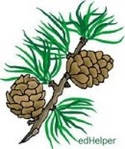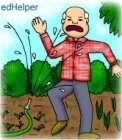
Worksheets and No Prep Teaching Resources
Reading Comprehension Worksheets
Plants
Spring

Plants
 Worksheets and No Prep Teaching Resources Reading Comprehension Worksheets Plants Spring |
 Plants |
| edHelper's suggested reading level: | grades 5 to 7 | |
| Flesch-Kincaid grade level: | 5.6 |
|
Planting a Garden
By Sharon Fabian |

|
 1 Which would you like - flowers or vegetables? Would you prefer daisies or roses, tiny violets or giant sunflowers? Maybe you would like corn on the cob, potatoes, tomatoes, carrots, or an eggplant. Or maybe you prefer green leafy houseplants, a lily in a flowerpot, tiny plants in a terrarium, wildflowers that you can dry to save, or a butterfly garden.
1 Which would you like - flowers or vegetables? Would you prefer daisies or roses, tiny violets or giant sunflowers? Maybe you would like corn on the cob, potatoes, tomatoes, carrots, or an eggplant. Or maybe you prefer green leafy houseplants, a lily in a flowerpot, tiny plants in a terrarium, wildflowers that you can dry to save, or a butterfly garden. |
Create Weekly Reading Books
Prepare for an entire week at once! |
| Leave your feedback on Planting a Garden (use this link if you found an error in the story) |
 |
Plants
|
 |
Spring
|
 |
Science
|